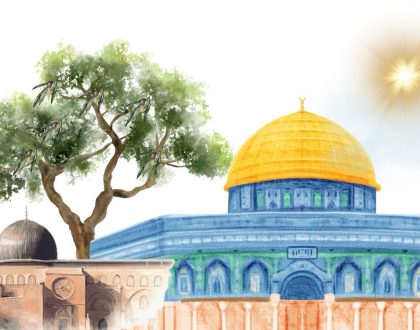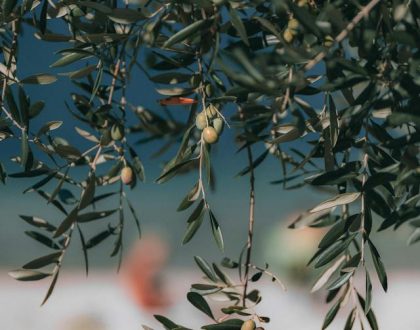The Nativity – Quiz Version!
by Hana
Today’s assembly will be on Maryam and Isa*, but instead of talking at you we will be asking you questions for you to think about. [could ask as rhetorical questions, or offer sweets, etc. as incentive for audience to answer]
So, who is Maryam in Islam?
- a) Mother of Jesus
- b) A pious lady
- c) A slave girl
Maryam is the Arabic form of the Hebrew name Mary, and Isa is Jesus. Everyone knows the story of the traditional nativity – how Mary and Joseph travelled to Bethlehem and there was no room at the inn. As Muslims believe in all the same prophets as Christian and Jewish people, we’d like to tell you what we believe about the life of Mary and the birth of Jesus. Muslims know Maryam as the mother of Prophet Jesus – or Isa. Maryam is as much respected in Islam as in Christianity, though our accounts of her are slightly different.
What is her status?
- a) An ordinary woman who happened to find herself in an extraordinary predicament
- b) One of the best women ever to have lived and highest of all women in paradise
In Islam, an entire chapter of the Quran is dedicated to her, and Isa is almost never mentioned without her – عِيسَى ٱبۡنُ مَرۡيَمَ (Isa bin Maryam) or Jesus, son of Mary. She was the closest thing to a female perfection there ever has or ever will be, and it says in the Quran: ‘The angels said: “O Mary! Allah has chosen you and purified you, chosen you above the women of the worlds.”’ [3:42]
How did Hanna – Maryam’s mother – feel about her pregnancy?
- a) Surprised because she did not know she was pregnant
- b) Surprised because she expected a boy
- c) She had always wanted a girl
Hannah was a pious woman. One day as she watched a bird feeding its chicks, she wished to have a baby herself. She made a promise to God that if she had a son she would dedicate him to the service of the temple in Jerusalem. She fell pregnant and hoped to fulfil her promise, so she was surprised when she gave birth to a girl. The Quran says: ‘So when she gave birth to her, she said: “My Lord, I have delivered a female, and Allah knows best what I have delivered, and male is not like the female,”’ [3:36]” She was perplexed and disappointed that she would be unable to fulfil her pledge, but in fact what God had planned was much more miraculous. Hannah was right when she said: ‘male is not like the female,’. If her child had been a boy, there would have been no way he could have gone on to do what Maryam did – mother a child who was a miracle, and who would change the world.
When pregnant, Hanna made a prayer for her unborn child, and even more remarkably, for her future grandchild also. Was it:
- a) For them to be wealthy and successful
- b) For them to be healthy
- c) For them to be protected from sin?
While many would wish for their children to be healthy and successful in life, Hannah’s prayer went beyond this world and, by protecting her child and grandchild from sin, she ensured their ultimate high status in paradise. The prophet Muhammad*’s daughter, Fatima, who is also one of the four perfect women, said that her father had told her she would be one of the highest women in Heaven, second only to Maryam.
We learn from this that we can also pray for our own descendants, not just for ourselves, and that we should not restrict our prayers to this life, but think about what happens next also.
Although Hannah had at first thought she was unable to keep her oath, Maryam was sent to live in the temple, looked after by the priest, Zakariya, who was also a prophet, and later became the father of Yahya, or John. He frequently found plates of unseasonal fruit in her quarters, and as Tesco did not exist, he was astonished. When he asked her where it had come from, what did she say?
- a) An angel brought it to her
- b) She had a vegetable patch
- c) She had invented a freezer
It was the angel Jibril – or Gabriel – who had been bringing the fruit, and when questioned, Maryam replied: ‘It is from God, surely, God bestows upon whom He pleases without measure.’ [3:37] It was also Jibril who appeared to her to tell her of her pregnancy, but in what form did he appear?
- a) A winged cherub
- b) A beautiful man
- c) A bright light
Muslims believe that angels are made of light, and do not relate to the artist impressions of angels as humans, or babies with wings or harps. We believe they inhabit another dimension so cannot be seen by us, but that they have appeared to prophets in human form at times. It was Jibril himself who was sent to Muhammad* and revealed the Quran, bit by bit over a period of 23 years, and has throughout time been the intermediary between God and His prophets.
Who was Joseph and what significance does he have?
- a) Maryam’s fiancé who took her to Bethlehem
- b) Her cousin who does not feature in the Quran
Although familiar with the Christian Nativity in which Joseph is an integral part, I have always wondered who he was, because he is not mentioned anywhere in the Quran. It was not until researching authentic references for this assembly that I came across one book which mentioned briefly that Maryam had a cousin of the same name.
We believe she travelled to Bethlehem companionless, when her baby was due. But where exactly was he born?
- a) In a stable because all the inns were full
- b) Under a palm tree
- c) At hospital with help of a midwife
While we believe that Mary conceived Jesus as a miracle, Joseph, the Inn, the donkey, the stable, the manger, and the shepherds do not feature in our version at all! We believe that, when in labour, Maryam took shelter under a palm tree.
What was the birth like?
- a) Miraculous and painless
- b) Excruciating
- c) Bearable because she had pain relief
As all mothers testify, giving birth is painful and Maryam was no exception. Mothers throughout time will relate to her, as she was in such pain that she cried out “I wish I had died before this!” [19:23]
So, what did God do to help her?
We are told that a voice spoke to her from under the tree: “Grieve not, for your Lord has provided a spring beneath you. And shake towards you the trunk of the palm tree, and it will drop on you fresh ripe dates. …” [19:24-25] So Maryam did as she was told, and was provided for.
And her son was born. What happened when she returned to her home?
- a) She appeared on international news
- b) She told them everything that had happened
- c) She said nothing
When in Bethlehem, she had also been instructed to stay silent, so when people saw her baby and accused her of impurity, she simply gestured to her child. People were confused by this, and asked how they were expected to speak to an infant, but, to their surprise, Isa* answered them, saying “I am indeed a servant of God; He has given me the Book and made me a Prophet, and He has made me blessed wherever I may be, and He commands me to perform prayer and give charity as long as I live; He has made me kind to my mother and not severe and hard-hearted. So peace is on me the day I was born, the day that I die and the day that I shall be raised to life.” [19:30-33]
The chapter of the Quran about Maryam was revealed at a time when Muslims in Makkah were being brutally tortured and even killed for their beliefs. To escape persecution, many of them emigrated to Ethiopia – or Abyssinia at the time – for asylum. The country was ruled by a Christian king, and these verses were revealed at the time to enable the migrants to recite them to the King. He was very moved by them, and could see that both faiths were forks of the same path, and shared a common God. He allowed the Muslims to settle and gave them protection from the people in Makkah who pursued them with violent intent.
So, while the Islamic version of the story may differ in many details, both faiths acknowledge the birth of Christ as a major miracle. And while Muslims do not accept that Jesus* was the son of God, we have a huge amount of respect for both him and Mary. The example of the Christian king shows the beauty of religious tolerance.
Years later, when Islam had spread throughout the Middle East and reached Jerusalem, Prophet Muhammad’s companion Omar who had become the Caliph (ruler of the Muslim empire), arrived there. He visited the Church of the Holy Sepulchre where he was invited to pray inside the Church, but Omar declined so as not to set a precedent and thereby endanger the Church’s status as a Christian site. Instead he prayed outside in the courtyard, where a mosque was later built. He also invited Jewish families, who the Byzantines had kept out of Jerusalem for centuries, to settle in the city and build a synagogue. Thus, all three faiths, sharing a common history, lived side by side in harmony, and a covenant assuring the safety of non-Muslims was displayed in the mosque.
*peace be upon him
Written by Hana Khan in 2014
Recommended Posts

Masjid al Aqsa – why it has a very special place in our hearts
November 29, 2023

Palestine: The Holy Land
November 23, 2023

70 acts of kindness
November 13, 2023
